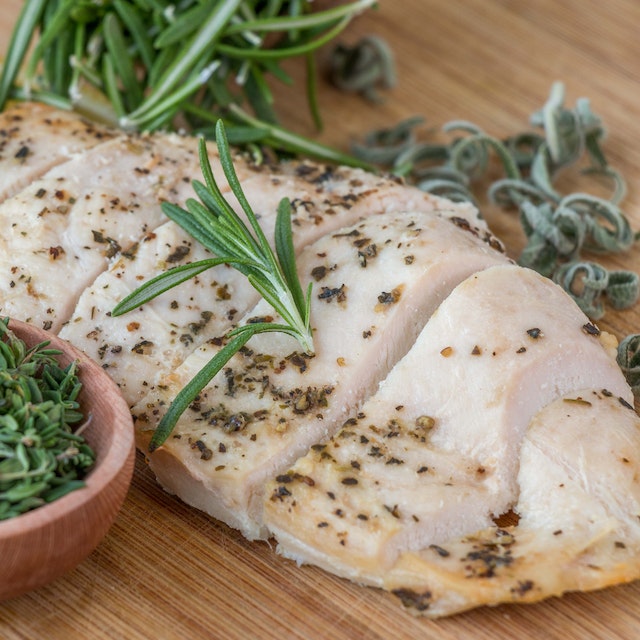
Eating habits play a crucial role in managing overall health, and it is no different when it comes to heart health. A balanced diet that mainly includes healthy fats, whole grains, fruits, and vegetables can protect your heart and keep it strong. In this article, you’ll find some tips that can help you create heart-healthy meals that are both delicious and nutritious.
Understanding Heart Disease
When it comes to eating for heart health, it is essential to have a basic understanding of heart disease. Heart disease refers to a range of conditions that affect the heart, including coronary artery disease, heart failure, arrhythmias, and heart valve problems. Each type of heart disease has its own causes, symptoms, and treatment options.
Coronary Artery Disease
This is the most common type of heart disease. It occurs when the arteries that supply blood to the heart become narrow or blocked due to the buildup of plaque, a fatty substance. Risk factors for coronary artery disease include high blood pressure, high cholesterol levels, smoking, diabetes, obesity, and a sedentary lifestyle.
Heart Failure
Also known as congestive heart failure, this condition happens when the heart is unable to pump enough blood to meet the body’s needs. It can be caused by underlying coronary artery disease, high blood pressure, previous heart attack, or heart valve problems. Risk factors for heart failure include advanced age, history of heart disease, high blood pressure, diabetes, and obesity.
Arrhythmias
Arrhythmias refer to abnormal heart rhythms. They can occur when the electrical signals in the heart are disrupted, causing the heart to beat too fast, too slow, or irregularly. Some arrhythmias may not cause any symptoms, while others can lead to chest pain, dizziness, fainting, or even cardiac arrest. Risk factors for arrhythmias include heart attacks, high blood pressure, heart valve problems, congenital heart defects, drug or alcohol abuse, and certain medications.
Heart Valve Problems
The heart valves regulate blood flow through the heart chambers. Problems with the valves can occur due to birth defects, infections, or age-related wear and tear. When the valves don’t open or close properly, the heart has to work harder to pump blood, leading to symptoms such as fatigue, shortness of breath, and swelling in the legs or abdomen.To reduce the risk of developing heart disease or managing an existing condition, adopting a heart-healthy lifestyle is crucial. This includes eating a balanced diet, maintaining a healthy weight, engaging in regular physical activity, quitting smoking, managing stress levels, and keeping chronic conditions such as high blood pressure and diabetes under control.

The Heart-Healthy Diet
Eating for heart health is all about making smart choices that benefit your cardiovascular system. By incorporating the right foods into your diet, you can nourish your heart and keep it strong. Here are some simple guidelines to follow when it comes to a heart-healthy diet:
- Fruits and Vegetables: Fill your plate with a rainbow of fruits and vegetables. These colorful produce are packed with essential vitamins, minerals, and antioxidants that protect your heart. Whether it’s a crisp apple, a juicy berry, or a vibrant leafy green, each bite contributes to your heart health.
- Whole Grains: Choose whole grains over refined grains whenever possible. Whole grains like oats, quinoa, and brown rice are rich in fiber, which helps lower cholesterol levels and reduce the risk of heart disease. Enjoy a hearty bowl of oatmeal for breakfast or swap white bread for whole grain options.
- Healthy Fats: Not all fats are created equal, and it’s important to include the right kind in your diet. Healthy fats, such as those found in avocados, nuts, olive oil, and fatty fish like salmon and mackerel, help protect your heart by lowering bad cholesterol levels. Embrace these fats in your meals for a heart-healthy boost.
- Lean Proteins: Opt for lean proteins like skinless poultry, fish, legumes, and tofu. These sources of protein are lower in saturated fats compared to red meat, which makes them a heart-healthy choice. Experiment with plant-based proteins like chickpeas or lentils for a delicious meatless meal.
- Limit Sodium: Too much sodium can contribute to high blood pressure, which is a risk factor for heart disease. Be mindful of your salt intake and opt for herbs, spices, and other flavorful ingredients to season your dishes. Explore different flavor profiles in your cooking to reduce reliance on excessive sodium.
- Hydration: Hydrating your body is vital for a healthy heart. Aim to drink plenty of water throughout the day, as it helps maintain optimal blood flow and supports overall cardiovascular health. Stay refreshed with water, herbal teas, and infused fruit waters instead of sugary beverages.
By incorporating these heart-healthy choices into your daily routine, you give your heart the nourishment it needs to thrive. Remember, it’s not about restrictive diets, but about making mindful choices that will benefit your heart in the long run. So, savor the flavors, enjoy the journey, and let every bite be a step towards a healthier heart.
Nutrients for Heart Health
When it comes to eating for heart health, certain nutrients play a crucial role in keeping your heart strong and healthy. Incorporating these essential nutrients into your diet can help lower the risk of heart disease and promote overall cardiovascular health. Here are a few key nutrients to focus on:

Omega-3 Fatty Acids
Omega-3 fatty acids are a type of healthy fat that is known to benefit heart health. These fatty acids can be found in fatty fish like salmon, trout, and mackerel. They help reduce inflammation and lower triglyceride levels, which can reduce the risk of heart disease. If you’re not a fan of fish, you can also get omega-3s from chia seeds, flaxseeds, and walnuts.
Fiber
A diet rich in fiber is essential for heart health. Fiber helps lower cholesterol levels, regulate blood sugar, and maintain a healthy weight. Include plenty of fruits, vegetables, whole grains, legumes, and nuts in your diet to ensure an adequate intake of fiber.
Antioxidants
Antioxidants are compounds that protect your cells from damage caused by free radicals. They help reduce inflammation and oxidative stress, which are risk factors for heart disease. Foods rich in antioxidants include berries, dark chocolate, green tea, and colorful fruits and vegetables.
Potassium
Potassium is an important mineral that plays a role in maintaining heart health. It helps regulate blood pressure and counteracts the effects of sodium on blood pressure. Potassium-rich foods include bananas, oranges, potatoes, spinach, and yogurt.
Magnesium
Magnesium is essential for heart health as it helps regulate heart rhythm and blood pressure. It is found in foods such as nuts, seeds, whole grains, leafy greens, and legumes.
Vitamin D
Low levels of vitamin D have been associated with an increased risk of heart disease. Sunlight is the best source of vitamin D, but you can also get it from fortified foods like milk, eggs, and fatty fish.
Remember, eating a variety of nutrient-rich foods is key to promoting heart health. Aim for a balanced diet that incorporates these essential nutrients while avoiding excessive intake of saturated and trans fats, sodium, and added sugars. By nourishing your body with these heart-healthy nutrients, you can take an active role in keeping your heart strong and thriving.
Heart-Healthy Foods
When it comes to eating for heart health, incorporating the right foods into your diet can make a significant impact. These heart-healthy foods are packed with essential nutrients that nourish your heart and promote overall cardiovascular health. Here are some simple yet powerful foods that you can enjoy to keep your heart strong:
- Leafy Greens: Spinach, kale, and other leafy greens are a nutritional powerhouse for your heart. They are rich in vitamins, minerals, and antioxidants that help reduce the risk of heart disease. Add a handful of spinach to your morning smoothie or enjoy a salad packed with mixed greens for a heart-healthy meal.
- Berries: Packed with antioxidants, vitamins, and fiber, berries are a delicious and heart-healthy snack. Whether it’s strawberries, blueberries, or raspberries, these vibrant fruits help reduce inflammation and protect your heart. Enjoy them on their own, sprinkle them on top of yogurt, or blend them into a refreshing smoothie.

- Oats: Start your day with a hearty bowl of oats for a heart-healthy breakfast. Oats are high in soluble fiber, which helps lower cholesterol levels and improve heart health. Add some fresh fruits and a drizzle of honey for a delicious and nutritious morning meal.
- Nuts and Seeds: Almonds, walnuts, chia seeds, and flaxseeds are excellent sources of heart-healthy fats, fiber, and antioxidants. Snack on a handful of nuts or sprinkle seeds on top of salads or yogurts for a tasty and heart-protective boost.
- Fatty Fish: Fatty fish such as salmon, sardines, and trout are rich in omega-3 fatty acids, which are known to promote heart health. These fatty acids help reduce inflammation, lower triglyceride levels, and support overall cardiovascular function. Aim to include fatty fish in your diet at least twice a week for maximum benefits.
- Avocado: Creamy and delicious, avocados are a heart-healthy fruit that is packed with monounsaturated fats. These fats can help lower bad cholesterol levels and reduce the risk of heart disease. Enjoy avocado slices on toast, in salads, or make a heart-healthy guacamole.
- Tomatoes: Tomatoes are rich in lycopene, an antioxidant that helps reduce the risk of heart disease. They are also a great source of vitamins C and A, potassium, and fiber. Whether fresh or cooked, tomatoes can be incorporated into a variety of dishes to add flavor and heart-protective benefits.
- Dark Chocolate: Good news for chocolate lovers! Dark chocolate, with a high cocoa content, is rich in antioxidants called flavonoids, which can help lower blood pressure and improve heart health. Indulge in a small piece of dark chocolate as a treat, but remember to choose varieties with at least 70% cocoa for maximum benefits.
Remember, these are just a few heart-healthy foods, but there are plenty more to explore and enjoy. Incorporating these foods into your diet alongside other healthy choices can create a well-rounded and heart-protective eating plan. When shopping for groceries, opt for fresh, whole foods and limit highly processed and sugary items.
Meal Planning for Heart Health
When it comes to eating for heart health, meal planning plays a vital role in ensuring that you have a well-balanced diet that supports cardiovascular well-being. With a little planning and preparation, you can create heart-healthy meals that are not only good for your heart but are also delicious and satisfying.
Here are some simple steps to help you get started with meal planning for heart health:

Set Goals: Begin by setting goals for your heart-healthy eating plan. Consider your current diet and any specific dietary needs or restrictions you may have. Determine what changes you need to make and what your desired outcomes are. Whether it’s reducing saturated fat intake, increasing vegetable consumption, or incorporating more plant-based proteins, clearly define your goals to guide your meal planning process.
Plan Your Meals: Take some time each week to plan your meals in advance. Start by creating a meal calendar or writing down your meal ideas for the week. Consider incorporating a variety of foods from different food groups, focusing on lean proteins, whole grains, fruits, vegetables, and healthy fats. Planning your meals in advance helps you stay on track, reduces food waste, and saves time in the kitchen.
Make a Shopping List: Once you have your meals planned, create a shopping list based on the ingredients you’ll need. Stick to the perimeter of the grocery store, where you’ll find fresh produce, lean proteins, and whole grains. Avoid processed and sugary foods as much as possible. Having a list ensures that you only purchase what you need and helps you make healthier choices while grocery shopping.
Prepare Ahead: Prep and cook some of your ingredients in advance to make mealtime easier and faster. Chop vegetables, cook grains, and marinate proteins ahead of time, so they are ready to use when it’s time to cook. Preparing ahead not only saves time but also encourages you to stick to your heart-healthy eating plan, as you’ll have healthy ingredients readily available.
Portion Control: Pay attention to portion sizes to avoid overeating. Use measuring cups, food scales, or portion control containers to ensure you’re consuming appropriate serving sizes. Eating the right portions helps you maintain a healthy weight and manage your blood pressure and cholesterol levels.
Cook at Home: Cooking at home gives you better control over the ingredients and cooking methods used in your meals. Aim to cook most of your meals from scratch to avoid hidden unhealthy fats, sodium, and added sugars. Experiment with different herbs, spices, and cooking techniques to add flavor to your dishes without relying on excessive salt and unhealthy fats.

Incorporate Heart-Healthy Recipes: Find heart-healthy recipes that align with your dietary goals and preferences. Look for recipes that include plenty of fruits, vegetables, whole grains, and lean proteins. Experiment with different flavors, cuisines, and cooking techniques to keep your meals interesting and flavorful.
Be Mindful of Snacks: Choose heart-healthy snacks that satisfy your cravings while supporting heart health. Opt for fresh fruits, vegetables with hummus or yogurt dip, a handful of nuts, or homemade granola bars. Avoid processed snacks that are high in sodium, unhealthy fats, and added sugars.
Practice Moderation: While it’s essential to make healthy food choices, remember that moderation is key. Allow yourself the occasional treat or indulgence, but be mindful of portion sizes and frequency. Enjoying small portions of your favorite indulgences can help you stay committed to your heart-healthy eating plan without feeling deprived.
Stay Hydrated: Don’t forget to drink plenty of water throughout the day. Staying hydrated supports optimal cardiovascular function and helps maintain overall health. Limit the consumption of sugary beverages and opt for water, herbal teas, or infused water instead.
Remember, meal planning for heart health is a journey, and it may take time to adjust to new eating habits. Be patient with yourself and celebrate each step you take towards a healthier heart. With mindful planning, nutritious ingredients, and a commitment to making heart-healthy choices, you can nourish your heart and enjoy a vibrant and fulfilling life.
